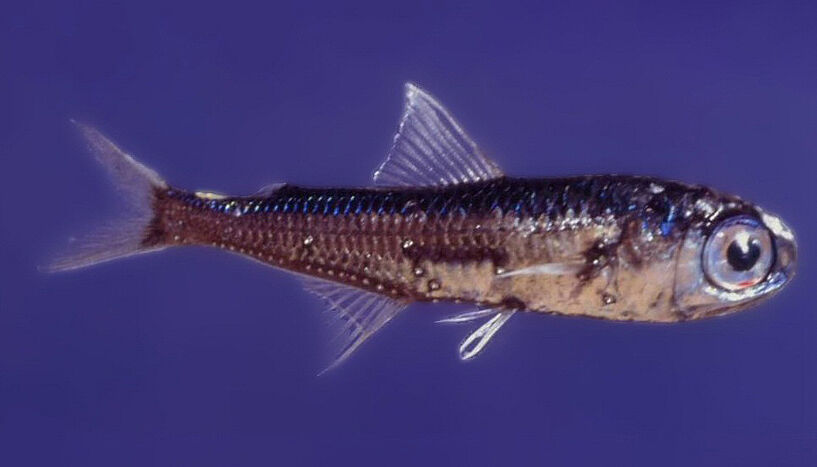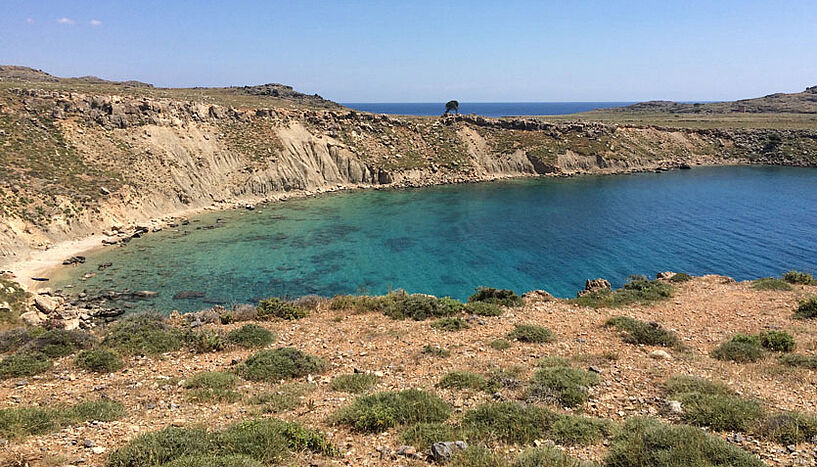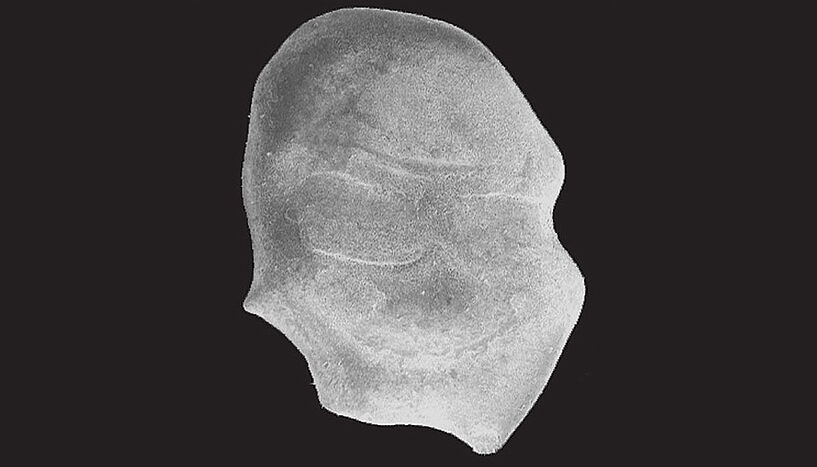Ocean warming reduced the body sizes of fishes in the "twilight zone" in past interglacial
17. January 2023Smaller mesopelagic fishes to be expected with climate warming
Fishes living in the twilight zone of the oceans reduce atmospheric carbon dioxide and are a huge food resource, but little is known about their response to climate warming. Geologist-Palaeontologist Konstantina Agiadi from the University of Vienna led a study funded by the Austrian Science Fund (FWF) that used fossils to answer this question. The results, published by the international team in the journal Proceedings of the Royal Society B: Biological Sciences, suggest that mesopelagic fishes overall shrink with warming.
Due to the current climate warming, studies have already predicted that fishes living in the sunlight part of the oceans (essentially the uppermost 200 m of the water column) are to decrease in size by 14–24 % by 2050 compared to the early 2000s. "But scarcely any studies had thus far addressed consequences of climate warming on the deeper part of the oceans, the twilight zone," says Konstantina Agiadi, palaeontologist at the University of Vienna. The twilight or mesopelagic zone of the ocean reaches from depths of 200 to about 1.000 metres. Lanternfishes alone, a group of small mesopelagic fishes that are named for their capacity to produce their own light (pale blue, green or yellow), make up more than half the fish biomass in the deep sea and about 100 times more than the total global annual fishery catches.
Fish otoliths are the key
The evolution of body size was studied using fossil otoliths of fishes from Pleistocene glacial and interglacial periods. The otoliths of fishes are small stones in the inner ear of bony fishes that facilitate the fishes’ sound and balance perception. As fossils, they are commonly preserved in sedimentary rocks. Their morphology is particular to each fish species and their size directly reflects the size of the fish individual they come from. This allows researchers to identify them in order to reconstruct past fish faunas. In their study, Agiadi and the research team retrieved fish otoliths from exceptional sedimentary formations dated 800–700 thousand years ago from the island of Rhodes in the Aegean Sea and used the otoliths' size to track changes in fishes body size through glacial and interglacial periods. They found that fishes during the interglacial period were smaller in size by 35%, when the global temperature had increased by 4 °C.
Small fishes have big impacts
Mesopelagic fishes, particularly lanternfishes, are important contributors to the biological carbon pump, a natural mechanism for reducing atmospheric carbon dioxide (CO2): During the day, phytoplanktonic organisms at the ocean surface absorb CO2 from the atmosphere through photosynthesis. Then, every night, lanternfishes travel hundreds of meters upward to the surface of the oceans in order to eat plankton, when larger fishes and marine mammals (their predators) cannot see them. In this way, lanternfishes transport huge amounts of carbon from the surface to the deep ocean. "Any adverse effects of climate warming on mesopelagic fishes are therefore expected to impact the oceans' ability to reduce atmospheric carbon dioxide – and with regard to the current climate warming these are alarming news," emphasises Martin Zuschin, head of the Department of Palaeontology and co-author of the study.
Publication in Proceedings B:
Palaeontological evidence for community-level decrease in mesopelagic fish size during Pleistocene climate warming in the eastern Mediterranean
by Konstantina Agiadi, Frédéric Quillévéré, Rafal Nawrot, Theo Sommeville, Marta Coll, Efterpi Koskeridou, Jan Fietzke, Martin Zuschin
Pictures:
Abb. 1: The lanternfish Myctophum punctatum C: Francesco Costa via Wikipedia
Abb. 2: The exceptional sedimentary rocks exposed along the Lindos Bay on the island of Rhodes (Greece) hold fossil archives of the ecosystem and climatic conditions in the eastern Mediterranean hundreds of thousands of years ago. From these, researchers isolated otoliths to reconstruct the fish fauna at that time. C: Konstantina Agiadi
Abb. 3: The otoliths of fishes are small stones in the inner ear of bony fishes that facilitate the fishes’ sound and balance perception. Their morphology is particular to each fish species and their size directly reflects the size of the fish individual they come from. C: Konstantina Agiadi
Scientific contact
Dr. MSc. Konstantina Agiadi
Institut für Paläontologie1090 - Wien, Josef-Holaubek-Platz 2 (UZA II)
+30 6937193560
konstantina.agiadi@univie.ac.at
Further inquiry
Mag. Alexandra Frey
Media Relations ManagerUniversität Wien
1010 - Wien, Universitätsring 1
+43-1-4277-17533
+43-664-8175675
alexandra.frey@univie.ac.at
Downloads:
20230116_Agiadi_Abb1_01.jpg
File size: 192,68 KB
20230116_Agiadi_Abb2_01.jpg
File size: 395,91 KB
20230116_Agiadi_Abb3_01.jpg
File size: 155,04 KB



